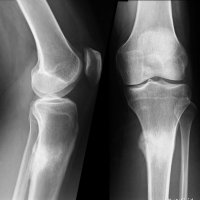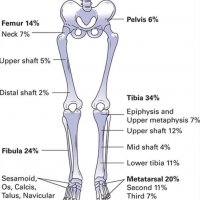STRESS FRACTURE
M, 38 y.o, marathon runner, with lump at proximal tibia and occasionally painful.
No history of trauma is noted.
Stress fractures refer to fractures occuring in bone due to a mismatch of bone strength and chronic mechanical stress placed upon the bone.
Stress fractures are far more common in the lower limb (-95%) than the upper limb.
High-risk sites of stress fractures usually are under tensile stresses and have poor vascularity
Plain radiographs have poor sensitivity (15-35%) in early-stage injuries, as positive findings may take months to appear.
MRI is the modality of choice for detecting stress fracture, and may also be useful for differentiating ligamentous/cartilagenous injury from bone injury.





